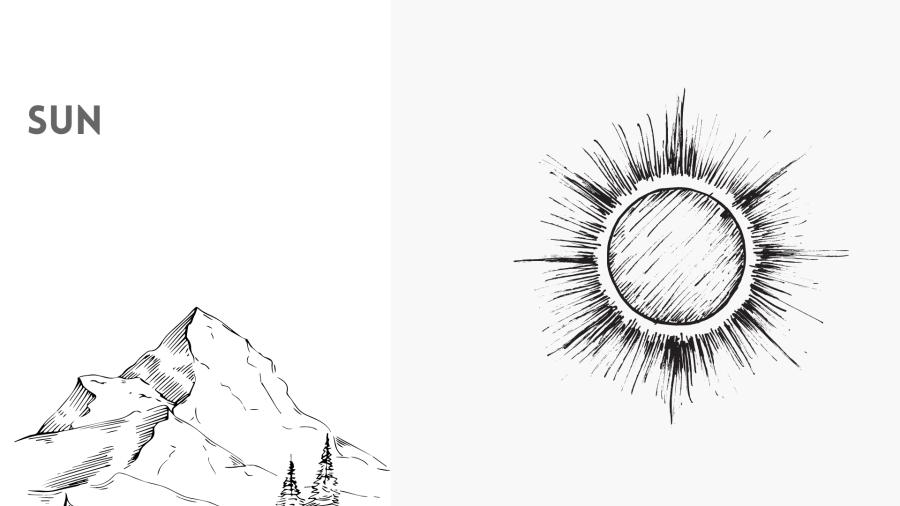
The Sun: Symbol of Power in Huichol Culture
The Sun, a universal symbol of life and energy, holds a particularly significant place in the spiritual and cultural fabric of the Huichol people, known as the Wixárika. For the Wixárika, the Sun is not just a celestial body but a powerful deity, a source of life, and a central figure in their cosmology. This article delves into the profound significance of the Sun in Huichol culture, exploring its symbolic meanings, representation in art and mythology, and its role in rituals and beliefs.
The Sun in Huichol Cosmology
In Huichol cosmology, the Sun is revered as a primary deity known as Tayau, which translates to “Our Father Sun.” Tayau is seen as the giver of life, the protector of the community, and the enforcer of moral order. The Sun’s daily journey across the sky is perceived as a powerful reminder of the cycles of life, death, and rebirth, embodying the eternal rhythm of existence.
The Sun’s rays are believed to carry the divine energy essential for the growth of crops, the health of the people, and the balance of nature. This connection underscores the deep respect the Huichol have for the natural world and their reliance on its cycles for sustenance and spiritual well-being.
Symbolic Meanings
The Sun symbolizes various profound concepts in Huichol culture:
- Power and Authority: As the supreme deity, the Sun represents ultimate power and authority, governing all aspects of life on Earth.
- Life and Fertility: The Sun’s warmth and light are essential for agricultural productivity, making it a symbol of life, fertility, and prosperity.
- Spiritual Guidance: The Sun is seen as a spiritual guide, offering wisdom, protection, and clarity to the people. Its presence in rituals signifies enlightenment and divine intervention.
Representation in Art and Mythology
Huichol art is renowned for its vibrant colors and intricate designs, often featuring symbols of the Sun. Beadwork, yarn paintings, and embroidery frequently depict the Sun with radiant beams, emphasizing its importance. These artworks are not merely decorative; they are imbued with spiritual meanings and serve as visual prayers for blessings, guidance, and protection.
In Huichol mythology, stories of the Sun are central to their understanding of the world. One such myth recounts the journey of the first shaman to the East, where he encountered Tayau and received sacred knowledge to bring back to his people. This myth highlights the Sun’s role as a source of wisdom and spiritual power.
Rituals and Ceremonies
Rituals honoring the Sun are integral to Huichol religious practices. One of the most significant ceremonies is the Peyote pilgrimage, where participants travel to the sacred desert of Wirikuta, believed to be the birthplace of the Sun. During this journey, they collect peyote, a sacred cactus, and perform rituals to communicate with the divine, seeking guidance, healing, and blessings.
The Sun Dance, another important ritual, involves elaborate dances and offerings to honor Tayau. Participants engage in this ceremony to express gratitude for the Sun’s gifts and to ensure continued prosperity and protection.
Cultural Preservation and Modern Challenges
As modern influences encroach on traditional ways of life, the Huichol people strive to preserve their cultural heritage, including their reverence for the Sun. Efforts to maintain traditional rituals, art forms, and spiritual teachings are vital in safeguarding their identity and beliefs. These practices are not only a means of cultural expression but also a way to maintain the spiritual balance that is central to their worldview.
The Sun, or Tayau, is more than a symbol of power in Huichol culture; it is a source of life, wisdom, and spiritual guidance. Its significance permeates every aspect of Wixárika life, from mythology and art to rituals and daily practices. Understanding the profound connection the Huichol have with the Sun offers a glimpse into their rich cultural heritage and their enduring respect for the natural world. By honoring the Sun, the Huichol people continue to celebrate the cycles of life and the divine energy that sustains them.






This article gave me a deep appreciation for the Huichol culture and their reverence for the Sun. It’s fascinating how their art and rituals are so intricately connected to nature. I never realized the spiritual depth behind their beadwork and ceremonies.
I found the information about the Sun Dance and Peyote pilgrimage intriguing. However, I wish the article included more details about how modern challenges are impacting these traditions. It’s important to understand how they are adapting to preserve their culture.
Wow, learning about the Sun’s role in Huichol mythology and art was enlightening. The connection between their spiritual beliefs and natural elements is truly inspiring. This article has definitely piqued my interest in their rituals and way of life.
The article is informative, but I was hoping for more visuals to complement the descriptions of Huichol art. The symbolic meanings are interesting, but seeing examples would help me appreciate their craftsmanship even more.
You can find them on the folk art section, there are plenty of visuals
Reading about the Sun’s importance in Huichol culture was a new and enlightening experience for me. Their deep respect for nature and the spiritual significance of their rituals are fascinating. It’s a culture worth exploring and preserving.
“I appreciate the insight into Huichol traditions, it was a good read and gave me a better understanding of their cultural practices.